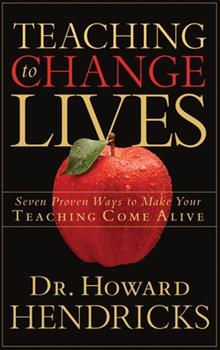
How to Teach:
This week will consist of two parts. We begin with addressing subjects like: The power of the Scriptures, God’s faithfulness to the teacher, the difference between teaching and preaching, the teacher as a lifelong learner and practical ways of preparing a teaching. The second part will be around the area of public speaking, the challenges, pitfalls and skills. Students will at the end of the week teach from one of the smaller prophetic books.
During the week specific assignments will accompany their preparations following the Inductive Method of Bible study, observation, interpretation and application. Constructive feedback will be provided throughout. The students will continue sharpen their teaching skills with additional assignments in the week 2 and 3 of the seminar. “Teaching to Change Lives – Seven Proven Ways to Make your Teaching Come Alive,” by Dr. Howard Hendricks will be used as a textbook for the week.
Deep Bible Content:
THE BIG IDEAS
Covenant
From ancient times, Israel had an ongoing relationship with Yahweh, and in their national history, this relationship was largely defined by the covenant established through Moses. Accordingly, the theology of Deuteronomy was central in the political history of the nation as well as in the oracles of the prophets. The prophets preached out of a deep consciousness of covenant implications, and their overpowering task was to call the people back to this ancient covenant.
Two other covenants, the one God made with Abraham and the one he made with David, were also prominent, and it is fair to say that the Israelites put more emphasis on them with their promises of land and perpetuity than they did on the covenant of Moses. Still, it was the covenant of Moses that would determine their immediate future.
Repeated covenant violation inevitably led to exile, the final curse in the series of curses for covenant failure in Deuteronomy. On the other side of exile, however, there still was hope in a future new covenant. This one would NOT be like the covenant of Moses, for it would be grounded in forgiveness, not crime and punishment.
Loss of Defining Symbols
The exile involved the loss of basic identity markers for the people of Israel, especially the land, the temple, and the kingship. Each of these identity markers were believed to be divinely fixed, and with their loss, there was the very real threat of a wholesale loss of faith. The prophets, who interpreted the exile as an act of divine judgment, ultimately sustained the faith of Israel. The exile, they preached, was not due to the superiority of Mesopotamian deities and armies. Rather, it was a judgment from Yahweh because of the centuries of covenant failure. It was Yahweh himself who, in faithfulness to his covenant word, sent Israel into exile, and it would be he, who because of his covenant promises, provided Israel with a hope beyond exile. The final word of God was not judgment, but hope!
The Hope of Israel
The hope of Israel beyond exile centered around two figures, the son of David and the Servant of the LORD. A new era was coming in which the dynasty of David, which had come to an abrupt and violent end in the exile, would be restored to the throne. Though Israel, the servant of Yahweh, had failed terribly in her mission to be a blessing and priesthood to the nations, an individual servant would one day come who would not fail but who in every way would be fully committed to God’s call. He would be the true servant that Israel never was. The initial step toward this future would be the return of the remnant from exile and the rebuilding of the temple. The family of David had not been erased from history, and the sacred promises God made to David were still intact. These promises were sustained in Zerubbabel and the post-exilic community who came out of Babylon as the remnant of God’s people. Nonetheless, by the end of the Hebrew Bible, this hope had been deferred to the indeterminate future. The Old Testament ends with the promise that before this great visitation from God, Elijah the prophet would appear.
The hope of Israel was sustained during the period between the Testaments, the so-called Silent Years. However, a number of key things occurred in this period, including the emergence of synagogues, the development of different sects, like Pharisees and Sadducees, and the rival community of the Samaritans. Most important, a Jewish revolt against the Greeks called the Maccabean War set the stage for a vision of political freedom that would extend into the period of the New Testament.
KEY CHARACTERS
Solomon
Solomon is the first great example of covenant violation. Though blessed beyond measure and the one to build the First Temple that David had envisioned, he went astray in his latter years. His dissolution set the stage for political division and religious corruption.
Jeroboam I
With the death of Solomon, Jeroboam I led the northern tribes to reject the new temple and the dynasty of David. He built alternative shrines, designed a new priesthood, and rejected the old calendar of national festivals. All his successors “walked in the way of Jeroboam, who caused Israel to sin.”
The Omri Dynasty
The northern kingdom was intent on being culturally relevant, which in turn led them into religious syncretism, the mixing of the faith of Yahweh with the religion of the Canaanites. The central figures in this shift came from the Omri dynasty, and the two most important characters in this shift were Ahab and his Phoenician wife Jezebel. The primary opponents of this shift were the prophets Elijah and Elisha. Elijah would confront Ahab directly with the challenge, “Who was really God, Yahweh or Ba’al?” Elisha would orchestrate the extinction of Ahab’s family. Not a single king in the north would guide the Israelites back toward covenant. Northern prophets, like Amos and Hosea, declared that the north was doomed. Exile would surely come from the invading Assyrians.
Reform Attempts in the South: Too Little, Too Late
The history of the south was punctuated by periodic efforts at reform. Hezekiah in the 8th century and Josiah in the 7th century attempted massive course corrections. Aided by prophets like Isaiah, Micah, and Jeremiah, they sought to turn the nation back to covenant and Yahweh, the covenant God. Their efforts were offset by intermediate kings, like Ahaz and Manasseh, who followed the pattern of the northern kingdom in mixing the faith of Yahweh with the religions of the Canaanites and Mesopotamians. The final days of Judah were marked by covenant failure to the point that Jeremiah declared exile was now inevitable. Jehoahaz was exiled to Egypt, Jehoiakim executed by Nebuchadnezzar, and Jehoiachin deported to Babylon. The siege of Jerusalem began on the day that Ezekiel’s wife died, a tragic symbol of the death of God’s wife, Israel. Two major deportations relocated the larger body of Judah’s citizens from Jerusalem to a ghetto in Babylon.
A Remnant Survives
Still, exile was not Yahweh’s final word. Cyrus, the new Persian emperor, would allow all displaced peoples to return to their homelands, and the exiled Jews in Babylon immediately took advantage of his generous proclamation. In their return to Jerusalem, they rebuilt the temple and the city. Leaders like Zerubbabel and Joshua, Haggai and Zechariah, spurred the people onward toward a new future. While the glory of God did not immediately fill the Second Temple, Haggai’s prophetic promise was that the Lord would indeed come! Malachi said that a forerunner would announce the coming of God. Elijah, the prophet, would appear before the “great and awesome Day of the LORD.”
TYPES OF LITERATURE
While most of the historical records of the kings of Israel and Judah are written in narrative form, once one gets to the prophets, the variety of genres increases substantially. The writing prophets sometimes used narrative as well, but they also used a wide range of other literary types, including allegory, taunt, lament, lawsuit, dialogue, vision, woes, and symbolic action. This makes reading the prophets more challenging, since the reader needs to be aware of these various types and how they are employed.
CONTROVERSIAL ISSUES
The Virgin in Isaiah 7
Because Isaiah’s prediction of a sign-child to be born is quoted in the New Testament as fulfilled in the birth of Jesus, it raises the question as to how this could be a sign to Ahaz in the 8th century BC. The Hebrew text speaks of a “young woman” who would bear a child, while the Septuagint speaks of a “virgin.”
Authorship of Isaiah 40-66
The context of Isaiah 40-66 is clearly located in the latter part of the exile, two centuries after the ministry of Isaiah and just prior to the transition from Babylon to Persia. The destruction of Jerusalem and the temple are described in past tense verbs as something that has happened, not something that is going to happen. Did Isaiah write this section, or was it written by an unnamed prophet during the exile and attached to Isaiah 1-39?
Does God Change His Mind?
At various times, God is said to “repent” or seemingly reconsider. Does this mean that he changes his mind, and if so, does he fully know the future, or are these descriptions merely anthropomorphisms? Can humans, by prevailing prayer, change God’s mind?
Is Prophecy Conditional or Unconditional?
A related issue as to whether or not God changes his mind concerns the test of genuine prophetic prediction, which according to Deuteronomy, is whether or not what is predicted by a prophet actually happens. Some predictions, such as, Jonah’s ultimatum to Nineveh, did not happen. Other predictions, like Ezekiel’s vision of a new temple, have not precisely been fulfilled. This raises the question as to whether or not prophecy is to any degree conditional.
Dating of the Book of Daniel
The latter part of the Book of Daniel, chapters 8 and 11 in particular, seem located in the Intertestamental Period with extensive political details. Did Daniel predict all this in the 6th century, or is there a 2nd century “hand” in this book?
The Canon and Authority of the Old Testament
Christianity is divided on the canon of the Old Testament. Roman Catholics and Eastern Orthodox Christians accept the Apocrypha as canonical, while Protestants do not. This difference was largely the outgrowth of the Protestant Reformation.




You must be logged in to post a comment.